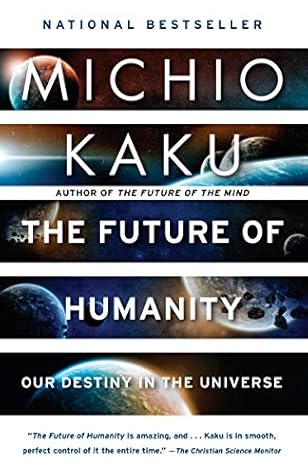More on this book
Community
Kindle Notes & Highlights
by
Michio Kaku
Read between
March 19 - April 11, 2018
Many of the themes underlying Asimov’s work were explored even earlier, in Olaf Stapledon’s seminal novel Star Maker.
“No Buck Rogers, no bucks.”
Killer asteroids are nature’s way of asking, “How’s that space program coming along?”
Ceres, the largest of the objects in the belt, might make an ideal base of operations. Ceres (whose name comes from the Greek goddess of agriculture,
As the saying in neuroscience goes, neurons that fire together wire together.
“Darwin Among the Machines,”
This fear is an old one and was actually expressed as far back as 1863 by novelist Samuel Butler, who warned, “We are ourselves creating our own successors. Man will become to the machine what the horse and the dog are to man.”
“before the prospect of an intelligence explosion, we humans are like small children playing with a bomb…We have little idea when the detonation will occur, though if we hold the device to our ear we can hear a faint ticking sound.”
computer scientist quoted in the New Yorker said, “I don’t worry about that [machine intelligence] for the same reason I don’t worry about overpopulation on Mars.”
Starship Century: Toward the Grandest Horizon,
able to
In addition to biological immortality, there is a second type, called digital immortality, which raises some interesting philosophical questions.
The next level of digital immortality beyond the Library of Souls is the Human Connectome Project, an ambitious effort to digitize the entire human brain.
CRISPR technology cuts through a lot of these complications. Actually, the basis of the technology evolved billions of years ago. Scientists were puzzled that bacteria developed very precise mechanisms to defeat an onslaught of viruses. How did bacteria recognize a deadly virus and then disarm it? They found that bacteria were able to recognize the threats because they carried a snippet of the virus’s genetic material. Like a mug shot, the bacteria were able to use it to identify an invading virus. Once the bacteria recognized the genetic string and therefore the virus, it would cut the virus
...more
In summary, the dreams of science fiction writers who speculated about modifying the human race to colonize distant planets were once considered to be too unrealistic or fanciful. However, with the coming of CRISPR, these far-fetched dreams can no longer be dismissed. Still, we must engage in a thoughtful analysis of all the ethical consequences raised by this fast-moving technology.
This debate over transhumanism is actually not a new one but goes back to the last century, when the laws of genetics were first understood. One of the first people to articulate the idea was J. B. S. Haldane, who, in 1923, delivered a lecture, later published in book form, entitled “Daedalus, or Science and the Future,” in which he predicted that science could use genetics to improve the condition of the human race.
cannot be sure, there is a high probability


